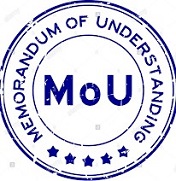*) Jurnal Edutech Undiksha (JEU) s Accredited Sinta 2 by The Ministry for Research, Technology and Higher Education (RISTEKDIKTI)
Submissions
Submission Preparation Checklist
As part of the submission process, authors are required to check off their submission's compliance with all of the following items, and submissions may be returned to authors that do not adhere to these guidelines.- The article has never been submitted and published to another publisher in any form of media (print/electronic). If there is duplication of publication, the author agrees to have the article removed from this journal.
- Articles are written and arranged based on Template and Author Guidelines. Text is written Times News Roman letters, size 10, space 1 and line spacing 1 cm. Text is typed in a print area with margins from top, bottom, left, right made 2.5cm. A4 paper size, 8.27-inch-wide, 11.69 inch high. Layout: 0.5-inch header, 0.5-inch footer, with a minimum number of 10 pages. The submitted article files are in Microsoft Word format (doc/docx).
- The number of scientific readings used in the bibliography is at least 15 titles (80% primary references and 20% secondary references). Primary references consist of journals, proceedings/papers, research reports, theses, theses, dissertations, while secondary references include general books and online sources of scientific information.
- The author has agreed to pay the publication fee if the article has been declared accepted and worthy of publication in Jurnal Edutech Undiksha.
Copyright Notice
Authors who publish with the Jurnal Edutech Undiksha (JEU) agree to the following terms:
- Authors retain copyright and grant the journal the right of first publication with the work simultaneously licensed under an Attribution-ShareAlike 4.0 International (CC BY-SA 4.0) that allows others to share the work with an acknowledgment of the work's authorship and initial publication in this journal.
- Authors are able to enter into separate, additional contractual arrangements for the non-exclusive distribution of the journal's published version of the work (e.g., post it to an institutional repository or publish it in a book), with an acknowledgment of its initial publication in this journal.
- Authors are permitted and encouraged to post their work online (e.g., in institutional repositories or on their website) prior to and during the submission process, as it can lead to productive exchanges, as well as earlier and greater citation of published work. (See The Effect of Open Access)
Privacy Statement
The names and email addresses provided on this journal site will be used exclusively for the stated purposes of this journal and will not be shared with any third party.







